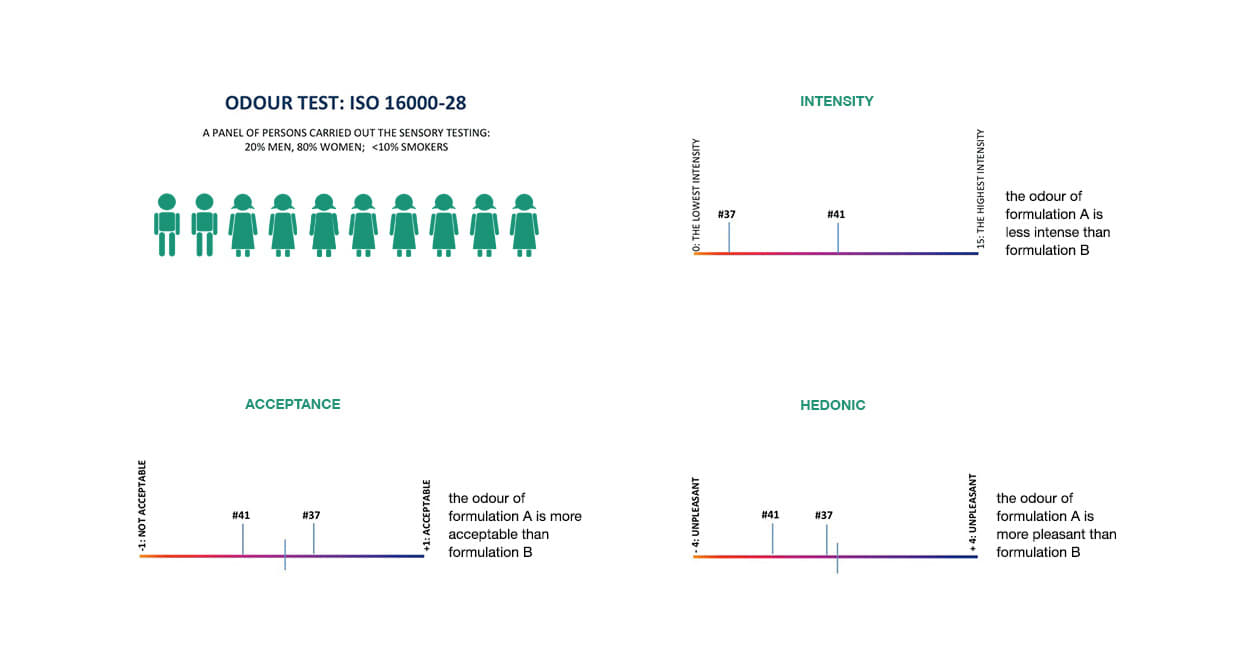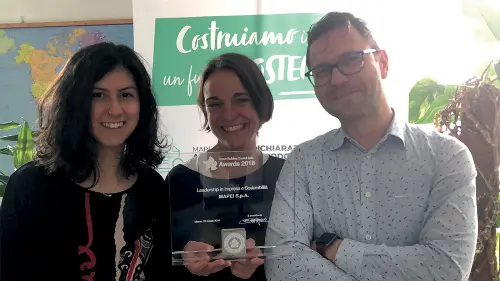

Internal Air Quality
IAQ: a drive for Mapei.
We spend around 80 to 90% of our time in closed environments, that's why the quality of internal air is so important. Constant research and testing in this direction are needed to guarantee our wellbeing. Mapei carried out some tests to certified the low odour properties of some of its products, among which its Ultrabond Eco 195.
We now spend around 80 to 90% of our time in closed environments and we breathe in up to 20 cubic metres of air every day: a valid reason to be worried about the quality of the air around us and that it does not have a negative impact on our wellbeing and health.
Proof of a growing awareness on this topic are the new strategies in the field of eco-sustainability launched by national and international governments, but also through regulations issued by individual countries, such as GPP: Green Public Procurement, for the management of tenders for the design and construction of new builds and for restoration work on existing buildings (such as schools) by local councils.
Also worth remembering is that users and clients are becoming increasingly sensitive to all types of odours. And they are quite right: unpleasant odours can be annoying or become the cause of conflict between people who need to interact within the same surroundings. These reasons explain the growing importance of the development of products for installing flooring with low emission of volatile compounds that give off as little odour as possible. In that sense, we have an enormous amount of power in our hands in determining the quality of indoor air, which is precisely why, in this particular field, MAPEI products with low emission levels can make a significant contribution: from primers to skimming compounds right up to adhesives, we are able to determine whether the installation of flooring is sound and, at the same time, has a low level of emissions and gives off very little odour.
QUALITY INDOOR AIR FOR OUR WELLBEING
Indoor Air Quality, or IAQ, is an important factor when evaluating our wellbeing: approximately 20% of Europeans suffer from asthma and other allergy-related illnesses caused by substances normally found in internal environments.
Numerous factors can have an effect on the quality of the air inside our homes: human behaviour, things that we burn (cigarettes, candles, incense, etc.), ventilation, detergents, perfumes, furniture and even building products give off volatile organic compounds (VOC) that have an influence on the air in confined spaces.
Some types of VOC may be cancerogeneous, such as benzene from fuel or formaldehyde in certain types of furniture. Other types of VOC may have no effect on our health, while other types may be toxic or hazardous.
It is indispensable, therefore, that the quality of indoor air is preserved, and it is good practice to only use materials that do not contain hazardous substances when designing and restoring structures, or at least use materials with a very low level of harmful substances.
SENSES AND PERCEPTION: WELLBEING STARTS FROM ODOURS
As far as indoor air quality is concerned, the development of odours plays an extremely important role: perceiving odours is a part of one of the principal and most elementary senses of human beings. The effect that odours have on us is registered in many different ways, is highly subjective and depends on our emotions.
Also, the level of importance placed on the sensory perception of air quality has increased even more over the last few years: odours in internal environments seem to be perceived more intensely and persist for longer in new constructions built according to energy savings criteria. Since both users of products and end users of the areas where the products have been applied are becoming less incline to accept odours and sources of unknown or unpleasant odours, their evaluation is becoming even more important. This is perfectly understandable: unpleasant odours may lead to conditions that can be perceived as stress factors and are often the cause of arguments or a sense of discomfort. And it is precisely because people are spending more and more time in closed environments that the quality and quantity of emissions given off by constriction materials into the air in internal environments is being studied.
THE SOURCES OF ODOURS FROM VOC IN INTERNAL ENVIRONMENTS
The emission of volatile organic compounds (VOC) in internal environments may only be perceived by our sense of smell if they reach a certain level of concentration. It does not necessarily mean, therefore, that the source of an odour can be determined using methods to measure VOC emissions. It is correct to say, however, that the use of products with certified low emission levels give off odours that are already almost imperceptible during use and, once hardened, are practically odourless.
This issue is becoming increasingly present and has now become of fundamental importance, starting with the strategy for eco-sustainability issued by the Ministry of the Environment (the aforementioned GPP), right up to buildings certified in compliance with the international protocols LEED and BREEAM. Low emission products help earn the aforementioned certification protocols in the indoor environmental quality sector.
A sure, reliable way of evaluating building products with low emission of volatile organic compounds has been offered for more than 20 years by GEV through its EMICODE®mark, which is proposed as an independent, non-competitive environmental standards mark (see the article we have dedicated on GEV on this issue of our magazine).
Mapei has developed solvent-free products with low emission of VOC, which, since 2005 have earned the right to carry the EC1 mark (very low emission of volatile organic compounds) and, since 2010, the EMICODE EC1 PLUS mark (very low emission of volatile organic compounds-PLUS). Both these marks are issued by GEV.
Our thanks go to Mapei GmbH for their kind permission to use some of their published materials which appeared on the German Realtà Mapei No. 20/2017.
(Photo credits: MAPEI GmbH, Fotolia)









